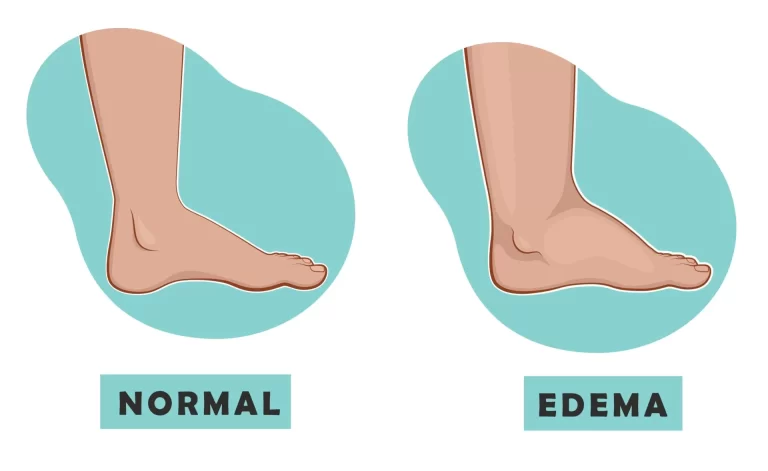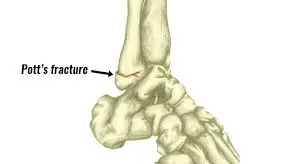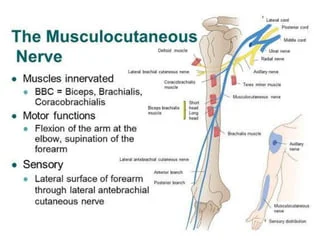Physiotherapy Exercises for Asthma Management: Breathe Easy
Asthma is a long-term illness that affects your lungs’ airways. It causes swelling and inflammation of the airways, which results in symptoms including wheezing and coughing. Breathing may become challenging as a result.
Aerobic activity can occasionally cause or exacerbate symptoms of asthma. Exercise-induced asthma or exercise-induced bronchoconstriction (EIB) are terms given to this illness.
What is asthma?
Another name for asthma is bronchial asthma, which is a lung disease. It requires continuing medical care because it is a chronic disorder. Approximately 25 million Americans currently have asthma. This number includes more than 5 million children. Asthma can be lethal if therapy is not received.
An Asthma Attack: What is it?
When you breathe regularly, the muscles surrounding your airways relax, allowing air to pass through them silently and effortlessly.
Three things may occur during attack:
The muscles around the airways constrict (tighten) in bronchospasm. They constrict your airways as they tighten. In narrowed airways, air cannot move freely. Your airways’ lining swells as a result of inflammation. Less air may enter or exit your lungs when your airways are swollen. Production of mucous: Your body produces more mucus during the attack. Airways are blocked by this viscous mucus.
Which kinds of asthma exist?
Types of asthma are distinguished by the extent of symptoms and the underlying cause. According to medical professionals, asthma is:
- Intermittent: This kind of asthma flares up and goes away, allowing you to feel normal in between episodes.
- Persistent: Those who have persistent asthma experience symptoms most of the time. Mild, moderate, and severe symptoms are all possible. The frequency of symptoms is used by medical professionals to determine the severity of asthma. They also take into account your ability to perform tasks during an attack.
Causes of Asthma:
- Allergy: In certain peoples allergens can trigger asthma episodes. Pollens, molds, and pet dander are examples of allergens.
- Non-allergic: Asthma flares up due to external influences. Weather, illness, stress, and exercise can all trigger flare-ups.
- Other forms of asthma include: The onset of adult-onset asthma occurs beyond the age of 18.
- Pediatric: Also known as pediatric asthma, this kind of asthma can strike infants and toddlers and frequently starts before the age of five. Asthma may outgrow children. Before determining whether your child needs an inhaler on hand in case of an asthma attack, you should be sure to talk to your healthcare practitioner about it. You can learn more about the hazards from your child’s doctor.
- Exercise-induced asthma: Also known as exercise-induced bronchospasm, this form of asthma is caused by physical exertion.. People who work with irritating substances are more likely to develop occupational asthma.
The condition known as asthma-COPD overlap syndrome (ACOS) occurs when a person has both asthma and chronic obstructive pulmonary disease (COPD). Breathing becomes difficult in both conditions.
What are typical triggers for asthma attacks?
If you come into contact with things that aggravate you, you could have an asthma attack. These drugs are referred to as “triggers” by medical professionals. It’s easier to prevent asthma episodes when you know what causes them.
A trigger can immediately set off an attack for certain people. An attack may begin hours or days later for other persons or at different periods.
Each person may have distinct triggers. However, a few typical triggers are as follows:
- Air pollution: A number of external conditions might trigger an asthma attack. Factory emissions, vehicle exhaust, smoke from wildfires, and other sources are examples of air pollution.
- Dust mites: Although invisible, these insects exist in our houses. This could trigger an asthma attack if you have a dust mite allergy.
- Exercise: Exercise may trigger an attack in certain individuals.
- Mold: Since mold thrives in moist environments, it could be an issue if you have asthma. An attack can occur even if you are not allergic to mold.
- Pests: Asthma attacks can be caused by mice, cockroaches, and other household pests.
- Pets: Your animals may trigger asthma episodes. If you are allergic, breathing in pet dander, which is composed of dried skin flakes, might irritate your respiratory system.
- Tobacco smoke: If you or someone in your home smokes, you have a higher chance of developing asthma. Quitting smoking is the best course of action, and you should never smoke in confined areas like your home or car. Your provider can assist you.
- strong odors or chemicals. These factors may cause attacks in certain individuals.
Particular exposures at work: You might be exposed to a range of materials at work, including cleaning products, wood or wheat dust, and other chemicals. Any of these could be triggers for asthma.
Which symptoms are indicative of asthma?
Asthma sufferers typically exhibit clear symptoms. These symptoms and indicators are similar to those of numerous respiratory infections:
- pressure, pain, or tightness in the chest.
- coughing, particularly in the evening.
- breathlessness.
- wheezing.
Not every asthma attack will cause you to feel all of these symptoms. You may have different signs and symptoms at different times if you have chronic asthma. Furthermore, the symptoms of an asthma episode can change from one to the next.
Diagnosis
How is asthma diagnosed by medical professionals?
Your medical history will be reviewed by your healthcare practitioner, along with details about your parents and siblings. You will also be asked about your symptoms by your healthcare provider. Any past history of allergies, eczema (an allergic rash), and other lung conditions will be required to be disclosed by your healthcare professional.
Spirometry may be prescribed by your physician. This test, which gauges airflow through your lungs, is used to identify conditions and track how well you’re responding to treatment. Your doctor might prescribe a skin test, blood test, or chest X-ray.
Prevention
How may an asthma attack be avoided?
If your doctor says you have asthma, you need to find out what triggers an attack. You can prevent an assault by avoiding the triggers. But asthma is an unavoidable condition..
If you don’t have asthma, you can still have EIB
Can asthma be managed with exercise?
Lung and heart health can both be enhanced by exercise.
Exercise generally has many health advantages, including lowering the risk of numerous illnesses, strengthening mental health, and increasing heart health.
Exercise also has the following additional advantages:
- maintained activity levels throughout the day, stable blood sugar levels, and defense against age-related brain damage
- reinforced muscles and bones
- decreased chance of developing some types of cancer
- enhanced sexual life, better sleep, and a lower chance of heart disease
- assisting someone in quitting smoking
What kinds of physical activity are beneficial for asthmatics?
The danger about flare ups of asthma during exercise may be decreased for people with asthma if they gradually increase their exercise level. Exercises that concentrate on increasing lung capacity and controlling breathing might be particularly helpful.
Activities and exercises that provide brief bursts of activity interspersed with rest can be beneficial. This type of exercise enables an individual to be engaged and enhance their strength and endurance without overtaxing their lungs.
Exercises for Asthma
The following types of exercise may be especially beneficial for those with asthma:
Yoga

A person can concentrate on their breathing by doing yoga. While strengthening muscles for general fitness, regulated, breathing patterns during exercise might assist expand a person’s lung capacity.
Additionally, the practice of yoga and breathing exercises can help people feel less stressed. Since many people’s asthma is triggered by stress, lowering stress may help prevent asthma flare-ups.
Swimming

People who have asthma benefit from swimming because it allows them to breathe in warm, humid air. Breath control can also be improved by swimming. As one’s lung capacity and level of fitness increase, one can gradually go to more strenuous sessions.
Because of the chlorine in the water, some individuals might find that swim in a pool aggravates their asthma symptoms.
Which Breathing Techniques Are Best for Asthma?
Breathing exercises can help your lungs in a similar way that aerobic activity helps your heart and muscles. Medications like inhalers are used to assist loosen up the airways to enhance breathing since asthma can cause your airways to become small and irritated, making it harder to breathe.
Asthma sufferers may benefit from breathing exercises in addition to medicine, which can aid with breath and quality of life.
People who have asthma might benefit greatly from a variety of breathing strategies. Certain exercises aid with breathing retraining, while others strengthen the respiratory muscles and enhance thoracic cage (rib cage) flexibility.
Asthma clinics and doctors frequently recommend breathing techniques. Some are more effectively taught by somebody with experience to make sure you understand the techniques and get the most out of them.
Papworth Method
Papworth Method, which combines relaxation and breathing techniques, was created at Papworth Hospital in the 1960s. The Papworth Method has been demonstrated to reduce respiratory symptoms and enhance the quality of life for asthmatics.
Physiotherapists teach the Papworth method, which focuses on learning to breathe regularly and slowly through your nostrils and from your diaphragm, the muscle below your ribcage.
Diaphragmatic Inhalation
The muscle beneath your lungs that facilitates breathing is called the diaphragm. Learning to inhale from your diaphragm instead of your chest, as so many people do, is the main goal of diaphragmatic breathing. In addition to strengthening the lungs, this asthma breathing technique can help reduce your breathing and lower your body’s oxygen requirements because weak muscles make you require more oxygen.
To practice breathing diaphragmatically:
- Maintaining a relaxed neck and shoulders, exhale through your mouth for a minimum of two to three times as long as you took in.
- Put your hands on your stomach and upper chest, respectively. As you inhale through your nose, observe how air fills your stomach.
- The hand on the chest should remain stationary, but the one on the stomach should ideally rise.
Inhaling with pursed lips
One way to assist manage dyspnea is to practice pursed lip breathing. It’s a useful technique for slowing down breathing and increasing the effectiveness of each breath. It facilitates the passage of carbon dioxide out of the lungs and oxygen into them by keeping the nostrils open for longer. This can alleviate dyspnea by reducing the rate of breathing.
When you’re not experiencing dyspnea, try pursed lip breathing.
- Shut your mouth and take a slow, deep breath through your nose.
- Then, as if you were going to blow a bubble or whistle, exhale from your mouth for at least twice as long while keeping your lips pursed.
- Counting as you exhale could be helpful.
Buteyko Method
Professor Konstantin Buteyko, a Russian scientist, created the Buteyko Method, a breathing retraining technique. only 10% of people breathe correctly, and many breathe too deeply, which causes the body to produce the incorrect blend of carbon dioxide and oxygen. In fact, shortness of breath might be the result of breathing too deeply.
The technique’s goal is to teach people how to breathe consistently so that their bodies have the ideal balance of carbon dioxide and oxygen. It instructs you to use your nose, not your mouth, to breathe softly and gently. This keeps the air wet and warm, which is better for airways that are sensitive to asthma.
How to Work Out Safely If You Have Asthma
Exercise can occasionally exacerbate asthma symptoms. This is thought to be because when you exercise, your breathing becomes more rapid and via your mouth, and the air entering your lungs may be drier and cooler than normal.
Some persons may experience asthma symptoms as a result of their airways narrowing due to the temperature shift. Making ensure that warm up properly before exercising and cool down afterward is one method to lower the chance that exercise can provoke asthma. Or, if the cold air bothers you, consider exercising indoors.
Advice on how asthmatics can exercise healthy:
- Always keep your reliever inhaler close at hand.
- Recognize the things that make your asthma worse and attempt to avoid them.. For instance, refrain from exercising in situations where you are impacted by heat or pollen.
- Inform others that you suffer from asthma and what to do in the event of an attack if you’re working out with them.
- Stop and use your relief inhaler if you do have symptoms like wheezing, dyspnea that doesn’t go away after you stop breathing, or coughing while exercising.
- Warm up and cool down, don’t forget.
- To be sure your activity and exercise are suitable for you, consult your physician or medical team.
Prognosis and Outlook
What is the prognosis for an asthmatic?
You can still lead a very active life and engage in sports and other activities even if you have asthma. With the help of your healthcare provider, you can identify your triggers, manage your symptoms, and prevent or prevent episodes.
FAQs
What is called asthma?
Another name for asthma is bronchial asthma, which is a lung disease. Since it is a chronic (ongoing) disorder, it requires constant medical attention and never goes away.
What is the main cause of asthma?
Typical triggers include indoor allergens including mildew, dust mites, and fur or dander from pets. Outdoor allergens, such as pollens, mold and Emotional stress.
What are the best exercises for people with asthma?
One of the most advised forms of exercise for those who have asthma is swimming. Walking is another excellent low-intensity activity. Other great options include hiking, recreational biking, short-distance track and field, and sports involving brief bursts of activity.
Which breathing techniques are most effective for asthma?
You can drive more oxygen into your lungs by inhaling through your nose and exhaling through your pursed lips. Because it helps slow your breathing quickly, this breathing technique is best used when you’re having trouble breathing. You will be able to relax and regulate your breathing with the practice.
Does asthma benefit from chest physical therapy?
Asthma symptoms can be effectively managed and controlled with chest physical therapy. Clients can improve their respiratory function by clearing the airways of thick secretions by using respiratory physiotherapy procedures.
What is the best exercise for the lungs?
Walking, running, and jumping rope are examples of aerobic exercises that provide the heart and lungs with the kind of training they require to perform at their best. Exercises that strengthen your core, such as Pilates or weightlifting, also improve posture and tone your breathing muscles.
Reference
- Nunez, K. (2020, January 28). All about asthma and exercise. Healthline. https://www.healthline.com/health/asthma/exercise-for-asthma
- Fletcher, J. (2019, February 14). What are the best types of exercise for asthma? https://www.medicalnewstoday.com/articles/324445
- Global Allergy & Airways Patient Platform. (2024, October 6). Breathing and Exercises for Asthma – Global Allergy & Airways Patient Platform. https://gaapp.org/diseases/asthma/breathing-exercises-and-techniques-for-asthma
- Asthma. (2025, February 9). Cleveland Clinic. https://my.clevelandclinic.org/health/diseases/6424-asthma







